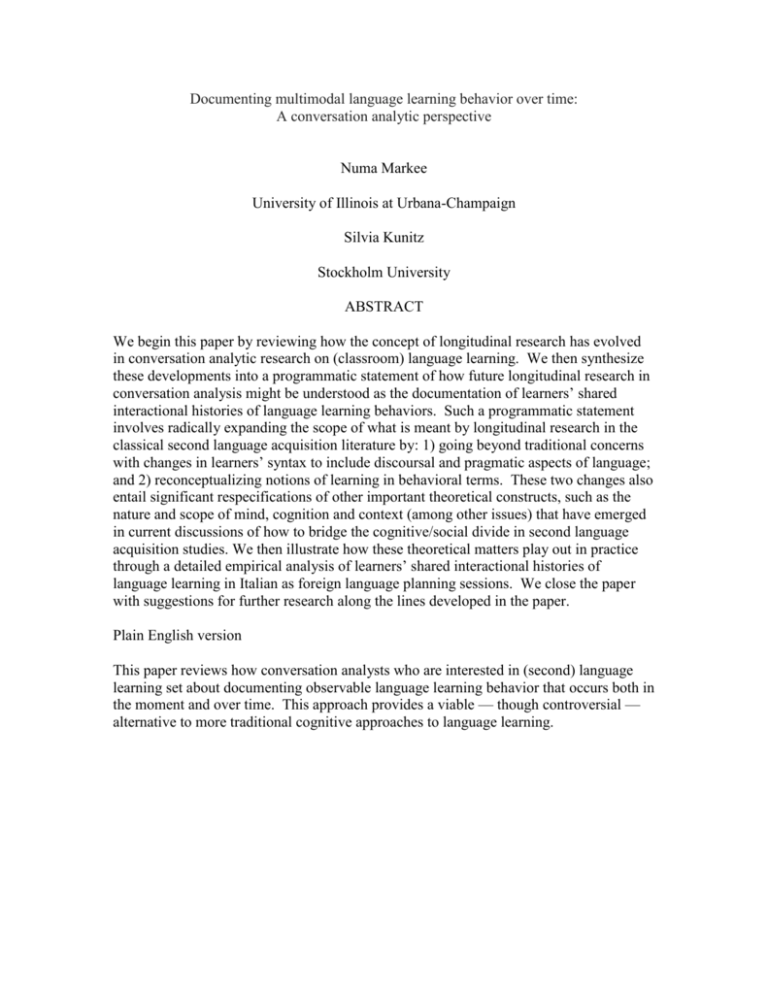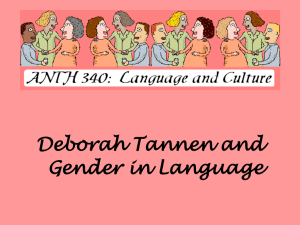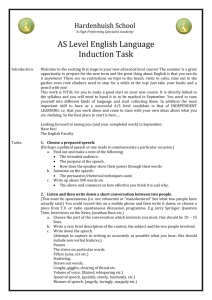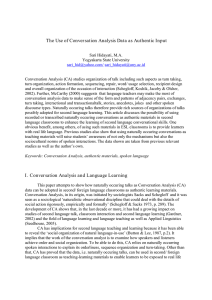Documenting multimodal language learning behavior over time: A
advertisement

Documenting multimodal language learning behavior over time: A conversation analytic perspective Numa Markee University of Illinois at Urbana-Champaign Silvia Kunitz Stockholm University ABSTRACT We begin this paper by reviewing how the concept of longitudinal research has evolved in conversation analytic research on (classroom) language learning. We then synthesize these developments into a programmatic statement of how future longitudinal research in conversation analysis might be understood as the documentation of learners’ shared interactional histories of language learning behaviors. Such a programmatic statement involves radically expanding the scope of what is meant by longitudinal research in the classical second language acquisition literature by: 1) going beyond traditional concerns with changes in learners’ syntax to include discoursal and pragmatic aspects of language; and 2) reconceptualizing notions of learning in behavioral terms. These two changes also entail significant respecifications of other important theoretical constructs, such as the nature and scope of mind, cognition and context (among other issues) that have emerged in current discussions of how to bridge the cognitive/social divide in second language acquisition studies. We then illustrate how these theoretical matters play out in practice through a detailed empirical analysis of learners’ shared interactional histories of language learning in Italian as foreign language planning sessions. We close the paper with suggestions for further research along the lines developed in the paper. Plain English version This paper reviews how conversation analysts who are interested in (second) language learning set about documenting observable language learning behavior that occurs both in the moment and over time. This approach provides a viable — though controversial — alternative to more traditional cognitive approaches to language learning.











